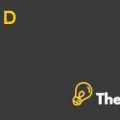INTRODUCTION
In early October 2002, when the interest rates were low, housing market was strong, unemployment was increasing, and customer confidence was uncertain, thus, the economic growth was very slow. The Retail Building – Supply Industry sustains to be going resilient. The industry was so strong that it was anticipated that the industry size will grow from $175 billion to $194 billion in five years.
This industry is called a consolidated industry because it is divided into three retail layouts, namely, hardware stores, lumberyards, larger format home centers, covering the share of 15%, 34%, and 51% of sales respectively. There are two market leaders dominating in this consolidated industry namely Home Depot and Lowe’s holding market share of 29% and 10.8% respectively.
Both market leaders have a well reputed strong brand name. They have earned their customers satisfaction and customer’s loyalty over the time period by providing its customers with best quality and exceptional customer care services.
Currently, both are making their back breaking efforts to rally their financial reports by enhancing up their top and bottom lines. They are making different strategies to compete more strongly by capturing more market share; they are penetrating into new markets, bringing innovations, offering excellent customer care services in order to attract more customers towards themselves. Not only they are offering traditional home centers, but also they are offering one-stop design shops and decorating shops as well as online stores.
Both the companies are also competing with each other by making heavy acquisitions. Home Depot, keeping in view of becoming the prevalent flooring supplier to domestic construction market, recently acquired three leading flooring enterprises. On the other hand, Lowe’s had made a billion transaction in acquiring a 38 store, warehouse-format chain Eagle Hardware.
Currently, Lowe is performing more efficiently than Home Depot, its growth rate is expected to increase in future as depicted in its forecast, which is attracting potential shareholders in the market towards Lowe’s. The new CEO of Home Depot is making new strategies in order to enhance overall efficiency and cost effectiveness by setting ongoing systems on inventory as well as working on their customer services in order to make them better.
PROBLEM STATEMENT
Carrie Galeotafiore, financial analyst at value line publishing has been analyzing the financial performance of Lowe’s and Home Depot. She has to present the 3rd quarterly report in which she also has to present the five years forecasted financial statements of Lowe’s and Home Depot separately. She has forecasted the financial performance of Home Depot and she is now looking forward to forecast the financial performance of Lowe’s
She is keen to know that currently which company is at the better position, which company will be the market trailblazer in future and as to what assumptions did she take to forecast the financial information of both key-players.
FINANCIAL RATIOS ANALYSES
In exhibit 1 the financial ratios of Home Depot have been calculated which shows that the return on capital was high in 1999 which is 17.3%, whereas due to decrease in profitability currently it has a ratio of 15.20%. On the other hand, return on equity is decreasing continuously and currently it is 16.8%.
On the other hand, gross profit margin and net profit margin of Home Depot are increasing as compared to previous years, which show that the company is making more profits as compared to previous years. It also indicates that the company is able to control its costs more efficiently than previous years.
Moreover, the total growth rate of the company is diminishing. Exhibit 1 shows that the total growth rate of the company in years 1998, 1999, 2000, and 2001 is 25.1%, 27.2%, 19.0%, and 17.10%. This is an alarming sign to the company which shows that if the company does not take any major preventive steps, then the company might lose its competitiveness because the growth rate is continuously declining which needs to be controlled.
Financial Analysis And Forecasting Case Solution
In exhibit 2, the financial ratios of Lowe’s have been calculated, which depicts the historic trends of the financial performance. Shareholders are attracted towards the company because the return on capital and equity are increasing and currently the return rate on capital and on equity are 10.4% and 15.3% respectively.
The company seems profitable because the gross profit margin and the net profit margin of the company are increasing robustly. On the other hand, the operating expense ratio is decreasing as compared to last 2 years, which shows that the company has good system of cost controlling and maintaining their operations cost effective..............
This is just a sample partial case solution. Please place the order on the website to order your own originally done case solution.












